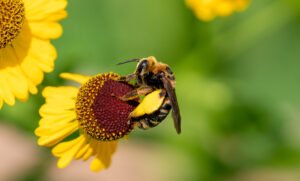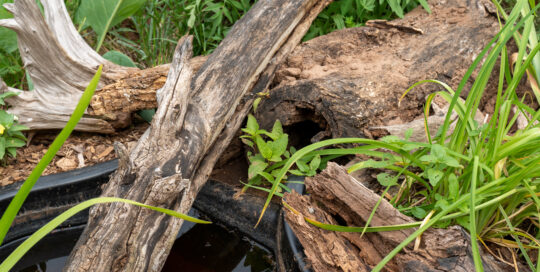Tidy up for spring with wildlife in mind
Views: 215

It’s almost here. I can feel it in my soul. My daffodils and tulips are already sprouting. Native plants are popping up everywhere, ready to go. My dormant grass is just waiting to burst forth, and then the war begins. Spring… it’s almost here. It may arrive early if prognosticators are correct. It’s such a warm day, and I want to be out in it, tidying things up, getting ready for April and planting season. But, I know I need to be patient. When I do start the process, I need to tidy up for spring with wildlife in mind, and that means waiting a little longer.
Patience is Key, Especially for Native Bees
Try to remember that our gardens are not just for us. They are also vital habitats for a myriad of creatures, including native bees and other wildlife.
Spring garden tidying is a delicate balancing act between promoting biodiversity and maintaining an aesthetically pleasing outdoor space. While it’s tempting to grab the rake and start clearing away dead leaves and debris, doing so too early can disrupt the delicate ecosystems that exist within our gardens.
One of the key considerations when tidying your garden for spring is to be mindful of the needs of wild bees. Many species of wild bees overwinter in the garden, hibernating in hollow plant stems, leaf litter, and other sheltered spots. Therefore, clearing away too much too soon can disturb these bees and disrupt their life cycles.
It’s important to delay any major tidying efforts until later in the spring. Instead of rushing to tidy up as soon as the weather starts to warm, take the time to observe and appreciate the signs of life returning to your garden. Allow wildflowers to bloom and provide early sources of nectar and pollen for bees emerging from hibernation.
Tidy Mindfully, with Habitat in Mind
When the time does come to tidy up, do so mindfully. Rather than clearing everything away indiscriminately, take a more selective approach. Leave patches of bare soil undisturbed for ground-nesting bees, and avoid removing dead plant stems until later in the season. These stems provide important nesting sites and shelter for overwintering insects.
Consider creating habitat features specifically designed to attract and support wildlife. Install bee hotels or nesting boxes in sunny, sheltered locations around your garden. These artificial nesting sites can provide much-needed habitat for solitary bees and other pollinators.
In addition to supporting wild bees, maintaining a wildlife-friendly garden can benefit a wide range of other creatures, from butterflies and birds to frogs and toads. Provide sources of water, such as bird baths or shallow dishes filled with clean water, and incorporate a variety of native plants to attract a diverse array of wildlife.
Avoid Pesticides
Another important consideration when tidying your garden for spring is to avoid the use of pesticides and herbicides. These chemicals can be harmful to bees and other beneficial insects, disrupting their natural behaviors and potentially causing long-term harm to populations. Instead, embrace organic gardening practices and seek out natural alternatives to manage pests and weeds.
Conclusion
Ultimately, the key to tidying your garden for spring while preserving habitat for wild bees and other wildlife lies in finding a balance between tidiness and biodiversity. Embrace a more relaxed approach to gardening, allowing nature to take its course and appreciating the beauty and diversity of life that unfolds in your garden throughout the seasons. By creating a welcoming environment for wild bees and other creatures, you’ll not only enhance the health and vitality of your garden but also contribute to the conservation of these essential pollinators for generations to come.
Meet Leslie Miller
Leslie Ann Miller shares 3.5 acres in rural Oklahoma with birds, butterflies and wide variety of animals. She is currently transforming her yard with plantings…
Leslie's Recent Posts

Creating microclimates and microhabitats to benefit wildlife






